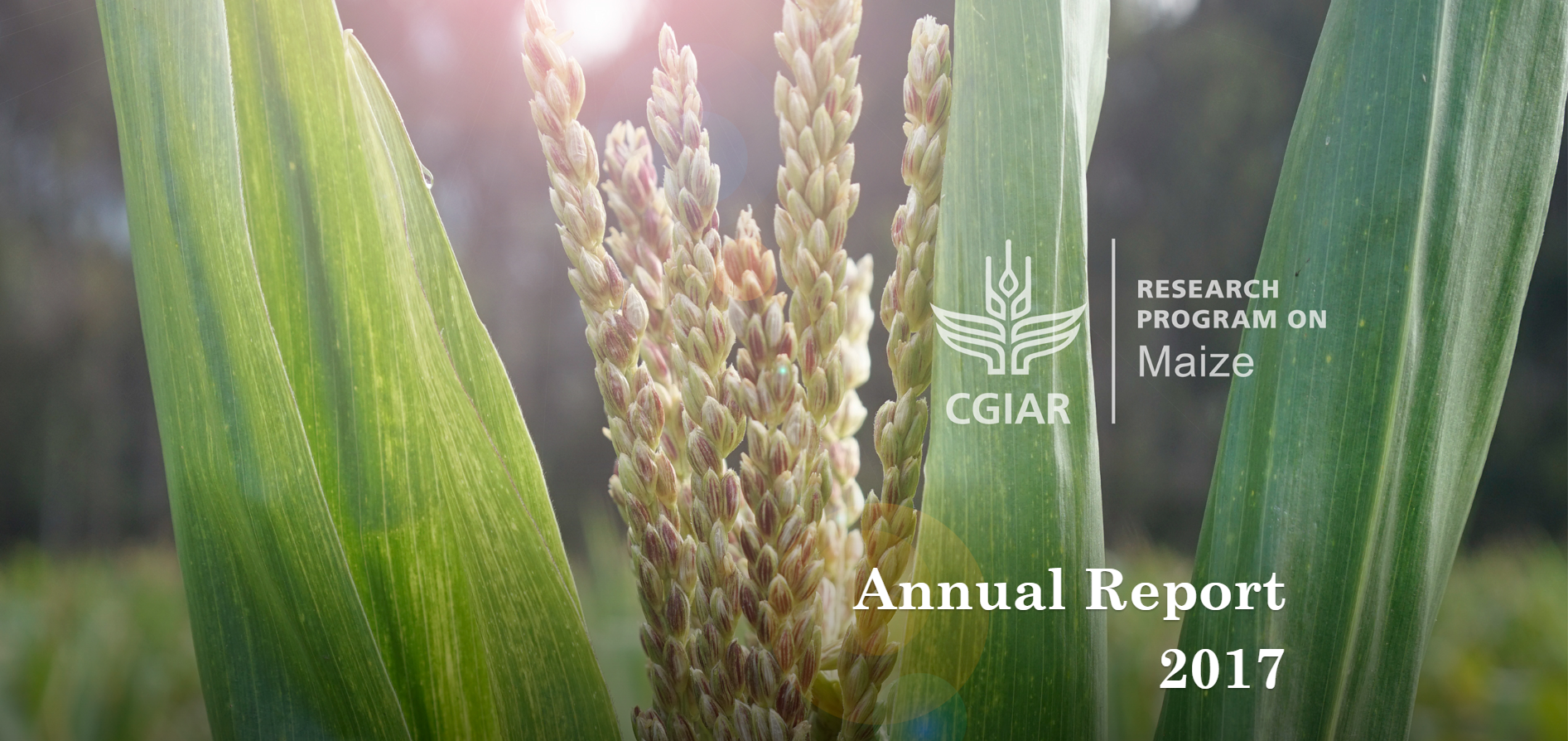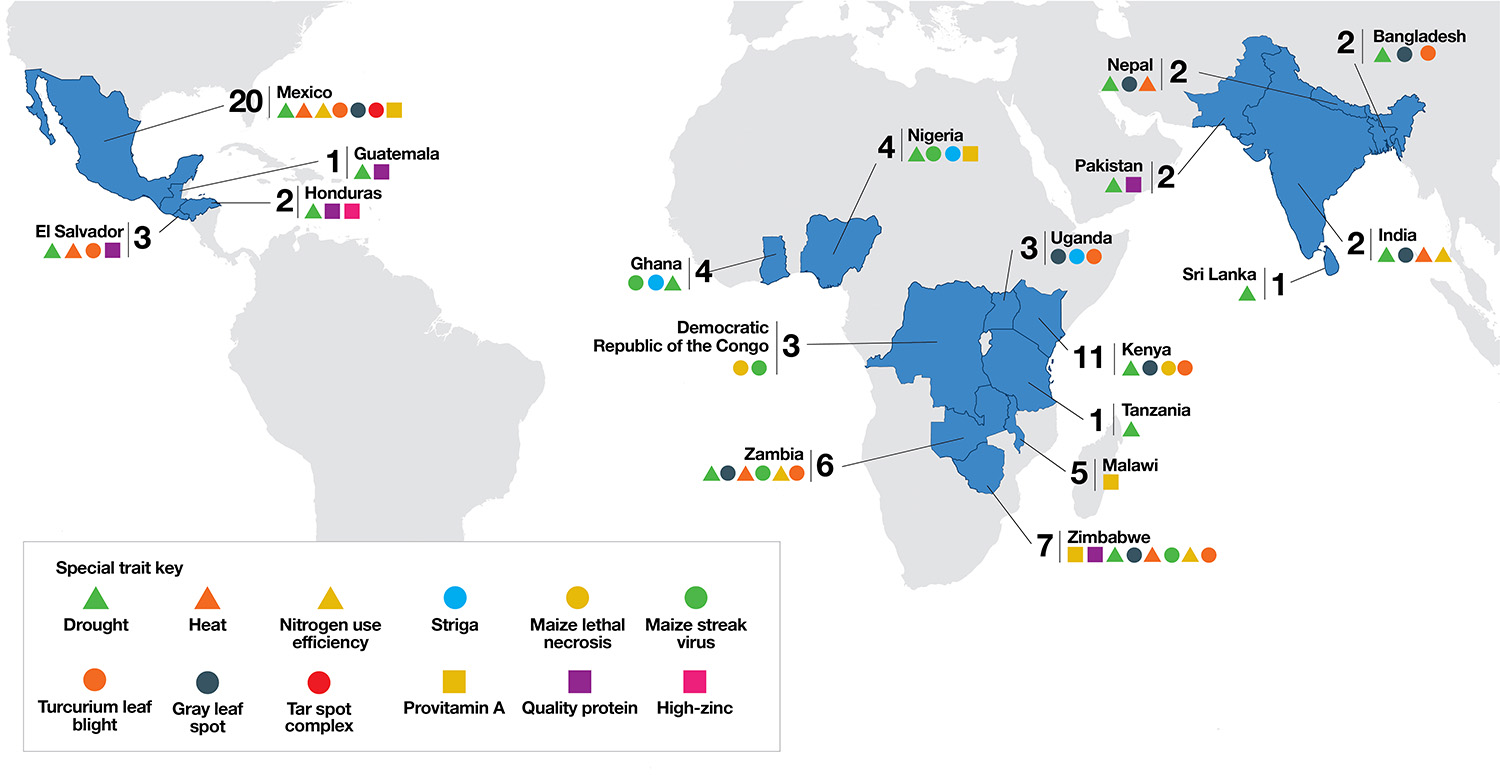
MAIZE Annual Report 2017

To read the MAIZE Annual Report 2017, please click here.
In 2017, 79 improved maize varieties were released by MAIZE partners worldwide, including 26 in Latin America, 44 in Sub-Saharan Africa and 9 in Asia. These varieties are based on use of CGIAR lines from the International Maize and Wheat Improvement Center (CIMMYT) and the International Institute of Tropical Agriculture (IITA). Some of the special traits stacked in these varieties include drought and heat tolerance, nitrogen use efficiency, enhanced protein quality, high kernel zinc and resistance to diseases of regional or global importance, such as maize lethal necrosis (MLN), tar spot complex (TSC), and resistance to the parasitic weed, Striga.

To view an interactive version of this map, click here.
The fall armyworm (FAW), a devastating insect-pest from the Americas,
continues its march across sub-Saharan Africa. MAIZE has been working closely
with international, regional and national partners to produce a comprehensive
technical guide on the integrated FAW management.
The MAIZE team is also working intensively to curb the spread and impact of
maize lethal necrosis (MLN) in sub-Saharan Africa through the development and
deployment of MLN-resistant maize hybrids, besides strengthening the capacities
of national plant protection organizations across sub-Saharan Africa on MLN
diagnostics and management. The rapid response to MLN and ongoing intensive
efforts against FAW highlight MAIZE’s expertise and partnerships to counter the
present and future pest/disease challenges in the tropics.
The release of second-generation tropicalized haploid inducers
(CIM2GTAILs) and the use of over 93,0000 doubled haploid (DH) lines in maize
breeding programs in Latin America, Africa and South Asia have great potential
to increase genetic gains for tropical breeding programs.
Sustainable intensification in maize based systems has yielded excellent
results. MAIZE researchers found compelling research evidence on the multiple
benefits of conservation agriculture and argued that it should be included as
one of the major technology packages in Ethiopia’s national agricultural
extension system.
In “Gender and innovation processes in maize-based systems,” a report
from the GENNOVATE initiative to MAIZE, researchers found that improved maize
seeds ranked as among the two most important agricultural innovations to have
come into their communities for both women and men.
I wish to thank MAIZE partners, funders and stakeholders for their continued
support and participation. Without the generous support of our funders, MAIZE
could not tackle emerging challenges such as maize pests and diseases or
climate variability. The CGIAR Research Program on Maize (MAIZE) receives
W1&W2 support from the Governments of Australia, Belgium, Canada, China,
France, India, Japan, Korea, Mexico, Netherlands, New Zealand, Norway, Sweden,
Switzerland, UK, US and the World Bank.
We thank you for reading this Annual Report, and look forward to keeping you
updated on our future activities as we work together with partners to improve
the lives and livelihoods of farming families in maize based systems around the
world.
B.M. Prasanna
Director of the CGIAR
Agri-Food Systems Research Program on Maize
To read the full MAIZE Annual Report 2017, please click here.
